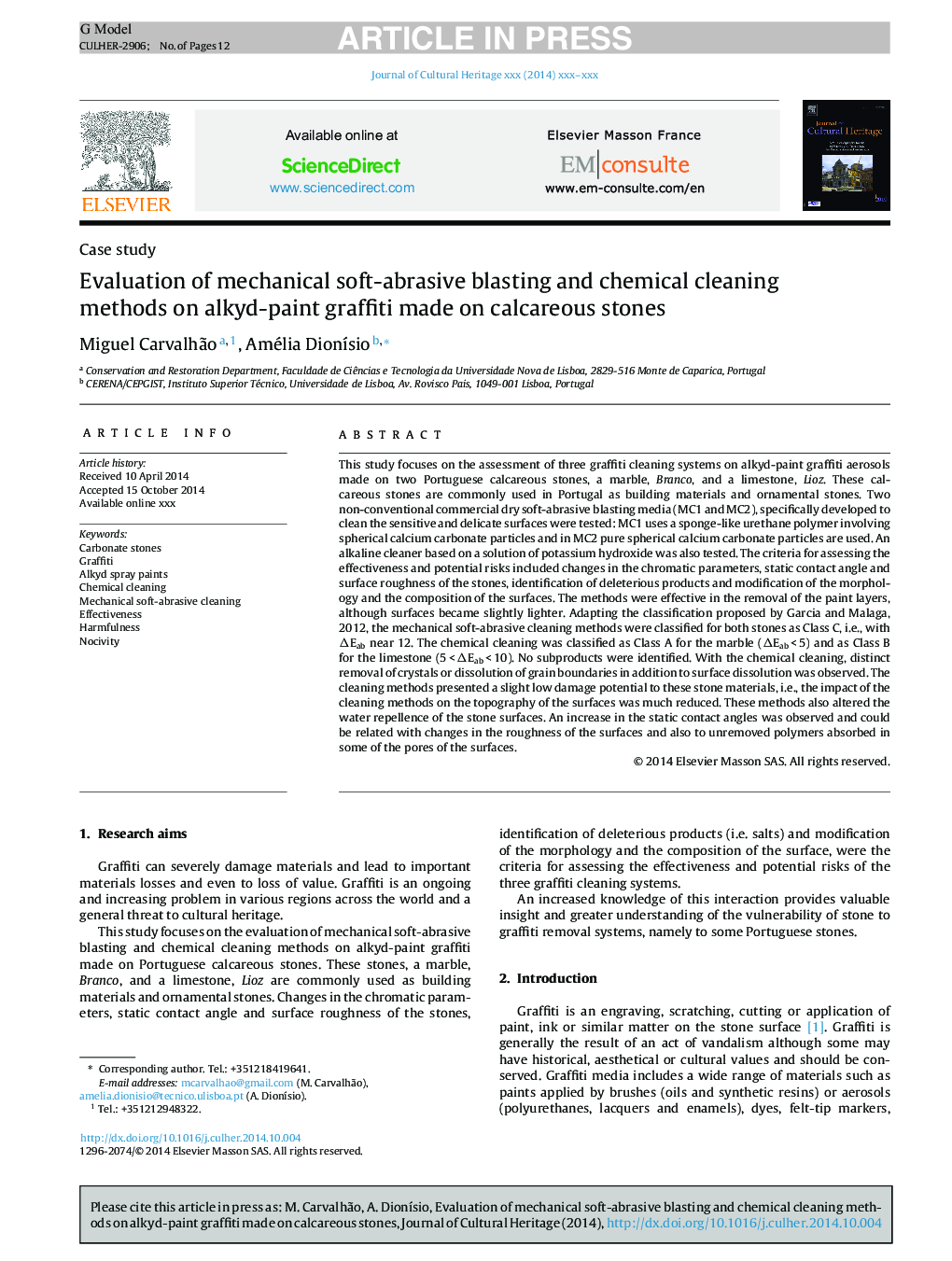| کد مقاله | کد نشریه | سال انتشار | مقاله انگلیسی | نسخه تمام متن |
|---|---|---|---|---|
| 10500011 | 944198 | 2015 | 12 صفحه PDF | دانلود رایگان |
عنوان انگلیسی مقاله ISI
Evaluation of mechanical soft-abrasive blasting and chemical cleaning methods on alkyd-paint graffiti made on calcareous stones
ترجمه فارسی عنوان
بررسی روشهای شستشوی مکانیکی نرم و ساینده و روشهای شستشوی شیمیایی بر روی نقاشی های آجری نقاشی روی سنگ های آهکی
دانلود مقاله + سفارش ترجمه
دانلود مقاله ISI انگلیسی
رایگان برای ایرانیان
کلمات کلیدی
سنگهای کربناته، گرافیتی، رنگ اسپری آلکید، تمیز کردن شیمیایی، تمیز کردن مکانیکی نرم ساینده، اثربخشی، آسیب پذیری، حساسیت،
موضوعات مرتبط
مهندسی و علوم پایه
شیمی
شیمی تئوریک و عملی
چکیده انگلیسی
This study focuses on the assessment of three graffiti cleaning systems on alkyd-paint graffiti aerosols made on two Portuguese calcareous stones, a marble, Branco, and a limestone, Lioz. These calcareous stones are commonly used in Portugal as building materials and ornamental stones. Two non-conventional commercial dry soft-abrasive blasting media (MC1 and MC2), specifically developed to clean the sensitive and delicate surfaces were tested: MC1 uses a sponge-like urethane polymer involving spherical calcium carbonate particles and in MC2 pure spherical calcium carbonate particles are used. An alkaline cleaner based on a solution of potassium hydroxide was also tested. The criteria for assessing the effectiveness and potential risks included changes in the chromatic parameters, static contact angle and surface roughness of the stones, identification of deleterious products and modification of the morphology and the composition of the surfaces. The methods were effective in the removal of the paint layers, although surfaces became slightly lighter. Adapting the classification proposed by Garcia and Malaga, 2012, the mechanical soft-abrasive cleaning methods were classified for both stones as Class C, i.e., with ÎEab near 12. The chemical cleaning was classified as Class A for the marble (ÎEab < 5) and as Class B for the limestone (5 < ÎEab < 10). No subproducts were identified. With the chemical cleaning, distinct removal of crystals or dissolution of grain boundaries in addition to surface dissolution was observed. The cleaning methods presented a slight low damage potential to these stone materials, i.e., the impact of the cleaning methods on the topography of the surfaces was much reduced. These methods also altered the water repellence of the stone surfaces. An increase in the static contact angles was observed and could be related with changes in the roughness of the surfaces and also to unremoved polymers absorbed in some of the pores of the surfaces.
ناشر
Database: Elsevier - ScienceDirect (ساینس دایرکت)
Journal: Journal of Cultural Heritage - Volume 16, Issue 4, JulyâAugust 2015, Pages 579-590
Journal: Journal of Cultural Heritage - Volume 16, Issue 4, JulyâAugust 2015, Pages 579-590
نویسندگان
Miguel Carvalhão, Amélia DionÃsio,
